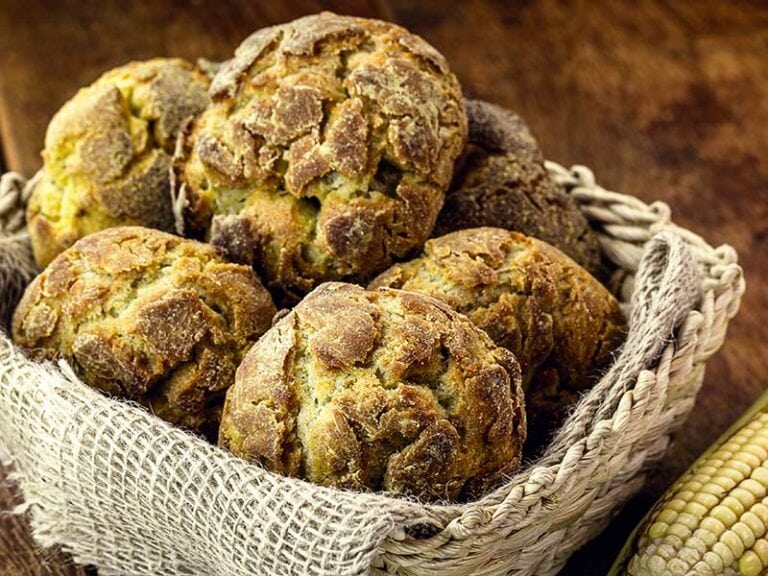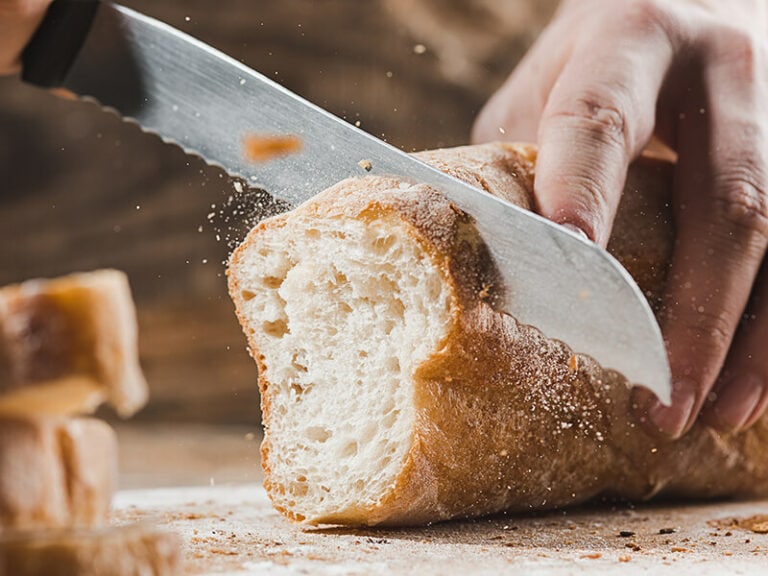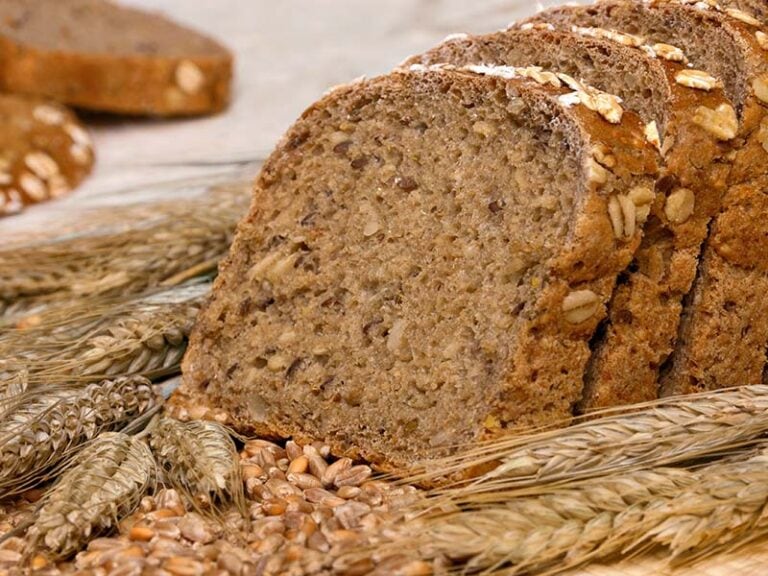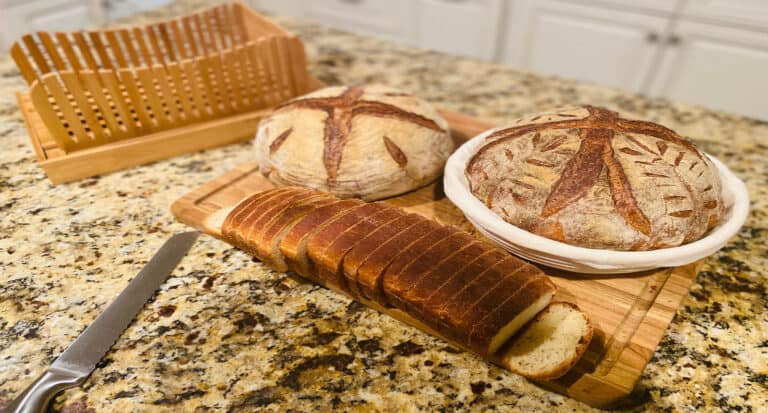How to store banana bread? Oh, banana bread, banana bread, so delicious and soft when fresh, but so dry and sad just after one day if not stored correctly. Sometimes, the bread even gets moldy!
To understand why banana bread goes bad with improper storage, you’ll need to understand the science behind the magic of banana bread: What makes fresh banana bread so great, and what you can do to preserve that greatness.
With the tips I’m going to show you today, you won’t have to worry about moldy banana bread ever again!
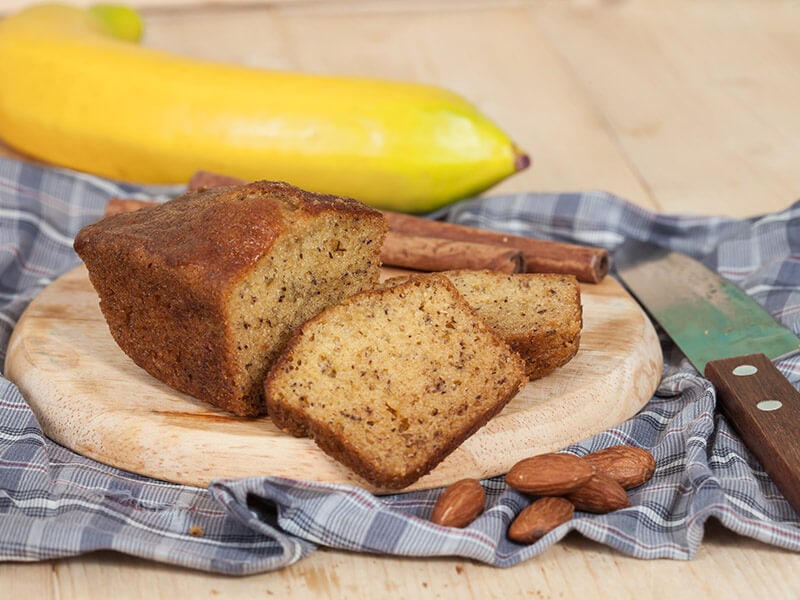
The Banana Selection
Have you ever questioned why bananas turn dark brown so quickly? This phenomenon happens due to the naturally-occurring yellow pigments of bananas. The yellow pigments of bananas belong to a class of organic substances called polyphenols (1).
Usually, polyphenols are antioxidants. When consumed, the antioxidants will help protect your cells from the oxidation process by oxidizing in place of your cell materials.
However, this means that when exposed to oxygen in the air or bruised, the polyphenols that made up bananas’ yellow pigments quickly oxidize, creating a sad unappetizing dark brown color in the banana and reducing the shelf life of the banana bread products (1).
At the same time, this oxidation process means that the antioxidant value of bananas will gradually decrease the longer bananas are kept before consumption, and the dark brown color is the marker of this loss of antioxidant value due to improper storage of the ingredient.
You can see this video to know more:
Why Days-Old Banana Bread Is Usually So Dry (Or Moldy)
Have you ever wondered why stored banana bread can turn dry and moldy at the same time? Science can help you understand this “contradiction”!
Why Days-Old Banana Bread Turns Dry
When stored for a long time, any bread, not just banana bread, will gradually lose moisture as its water content gradually vaporizes. However, the loss of moisture is more noticeable in banana bread compared to, say, baguette due to the higher percentage of water content in your average banana bread compared to your average baguette.
In general, this loss of moisture happens both outside in normal room storage and inside the refrigerator, though the process happens faster in the refrigerator than in normal room storage.
Why Days-Old Banana Bread Turns Moldy
To make matters worse, if improperly covered, the vapor will condense on the lid or food wrapping and drop down back onto the bread, making the bread dry at the bottom and soggy at the top.
In the worst-case scenario, the soggy top of the bread might even have molds growing, and when the banana bread has molds, you should not eat the “clean part” of the bread at all. You’ll have to throw it all out, wasting a perfectly good banana bread because of improper storage.
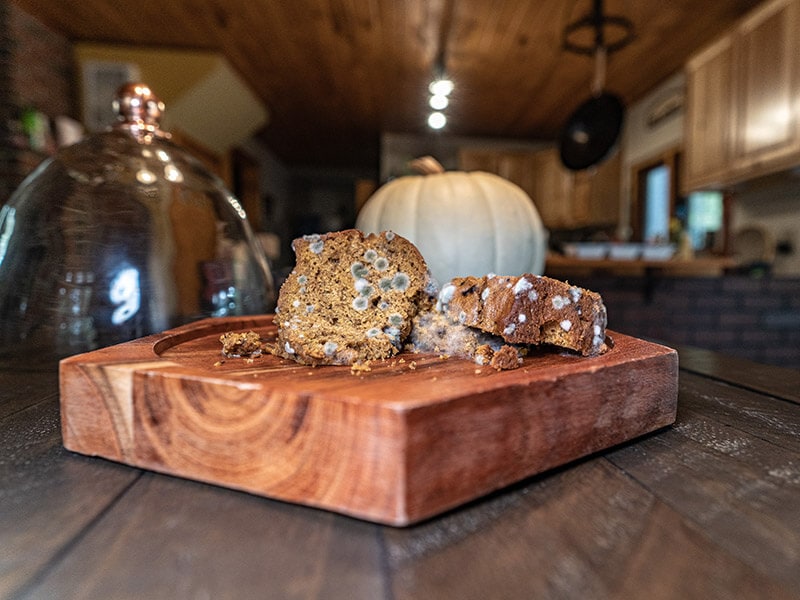
For storage practice, there is a trade-off between moisture content and long shelf life. The more moisture content is drawn out by the storage process and not let condensed onto the container/wrapping, the longer the shelf life is and the dryer the bread will be.
Luckily, you can add some moisture back to the bread during the reheating process. The proper storage methods and the heating methods for banana bread can be easily done by any home cook, without any fancy professional cooking equipment whatsoever.
You’ll have several methods to choose from depending on how long you intend to store your banana bread.
Preparation Is Important!
For your banana bread to have a long shelf life, you must do these steps before you can store your banana bread.
Step 1: Pick Good Bananas
Without good ingredients, good food can’t be made. Fresh ingredients mean that the shelf life of your finished products will be inherently longer than the shelf life of products made with ingredients that have been sitting on supermarket shelves for god knows how long.
Fresh ingredients, along with proper storage practice, will hold onto more nutrients and antioxidants than food made with bad ingredients and stored with improper storage practice.
Remember to pick bananas that are just ripe (but not too ripped to the point of browning en masse) for your delicious banana bread.
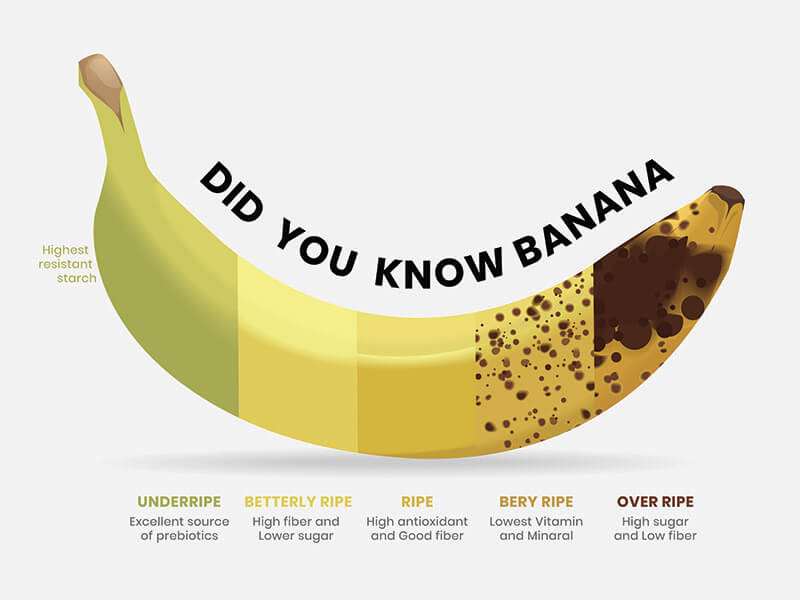
Step 2: Don’t Skim On The Butter And Oil
Another key item for moist and delicious banana bread is butter and oil. I know that people tend to shy away from butter for health reasons nowadays, but fat such as butter and oil are the main reasons why bread, any kind of bread, is moist at all (2).
Without enough butter and oil, the dough will harden in the oven and end up as an incredibly hard brick of flavored dry flour.
If you’re trying to stay healthy while enjoying your delicious banana bread at the same time, some mild and light olive oil or margarine is the more healthy (and vegan) substitute for butter.
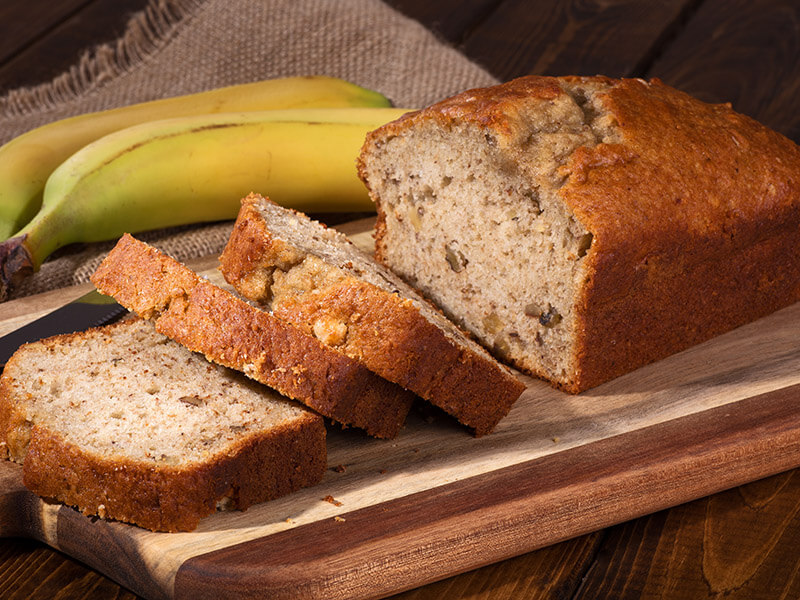
Step 3: Let Your Banana Bread Cool
A key misstep that a cook can make is not letting your banana bread cool completely before storage. As the banana bread cools, moisture evaporates from the bread.
If you wrap up the banana bread too quickly while it is hot, the moisture will condense around the food wrapping or container lid. The condensation will make your bread soggy, sometimes leading to molding on your banana bread.
Drying is bad for taste, but slightly dry bread is better than moldy bread.
Of course, banana bread is always best when freshly baked, but you can’t always finish the entire loaf at once. A certain degree of drying out is expected during the storage process.
But not too worry! As long as the banana bread is not too dried out, there are ways to add back the necessary moisture to your banana bread during the thawing and heating process.
You can see this video to know more:
How To Store Banana Bread In 3 Easy Ways
Many have asked the internet before: Should store-bought banana bread be stored in the same way as homemade banana bread. The answer is that stored-bought banana bread should be stored with the same methods as homemade banana bread.
Mass-produced banana bread might have some preservatives added to have a longer shelf life at room temperature, but they’re still going to dry out or grow moldy if left out too long or stored incorrectly.
Bakery’s banana bread is the same as homemade banana bread, with no preservatives added.
For all intents and purposes, the 3 methods mentioned below with their estimated shelf lives apply to all banana bread regardless of origins.
Depending on how long you need to store banana bread, you’ll need to choose between 3 different storing methods for your banana bread. Each method will have different shelf lives, pros, and cons.
Method 1: Store At Room Temperature – For Use Within 3 Days
If you plan to finish the loaf of banana bread within 3 days, room temperature storage is the best storage method.
While room temperature storage has shorter shelf life than the refrigerator and freezer methods, storing banana bread at room temperature is best at keeping the moisture in the bread and not letting it dry out too much.
For the room temperature method, I recommend that you store the bread by loaf. Cutting the bread into slides or half-loaf will increase the surface area of the bread, making the slides lose moisture faster than a whole loaf will.
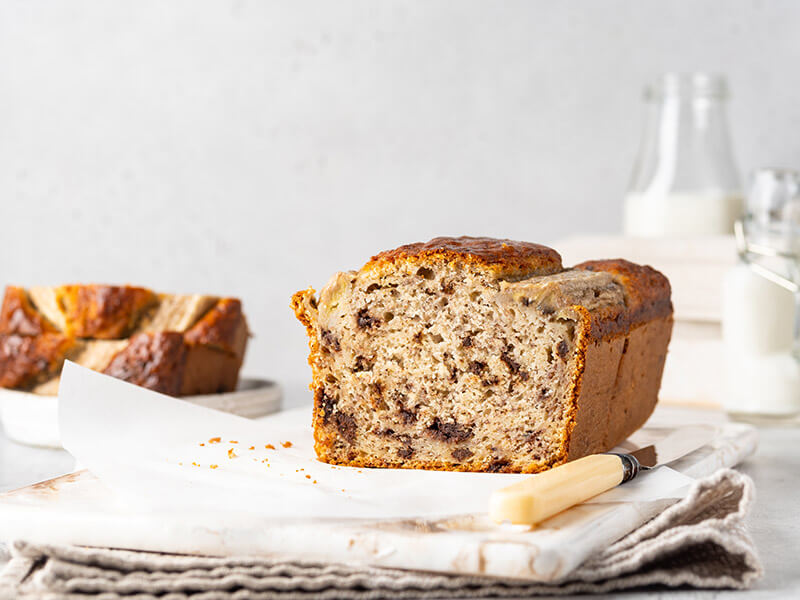
Step 1: Wrap The Bread In Paper Towels
After the banana bread has completely cooled down, you can place the bread on a paper towel. The paper towel can absorb the leftover water that will vaporize out of the bread over the next few days. Another paper towel should be placed on top of the bread.
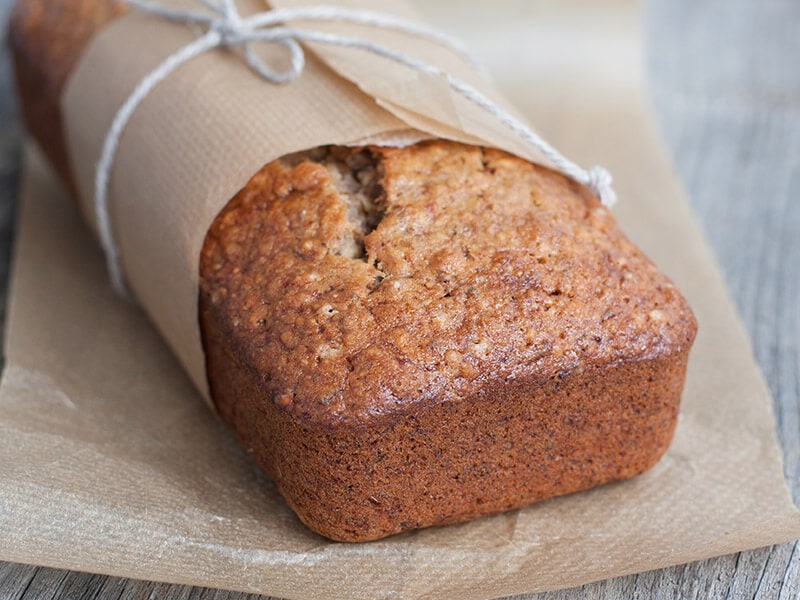
Step 2: Place Bread In A Locking Container
Place the paper towel-wrapped bread in a locking container. Don’t use plastic wrapping to wrap the bread in this method, as plastic wrapping might be too air-tight and make the bread too soggy. And a piece of soggy bread is likely to develop mold.
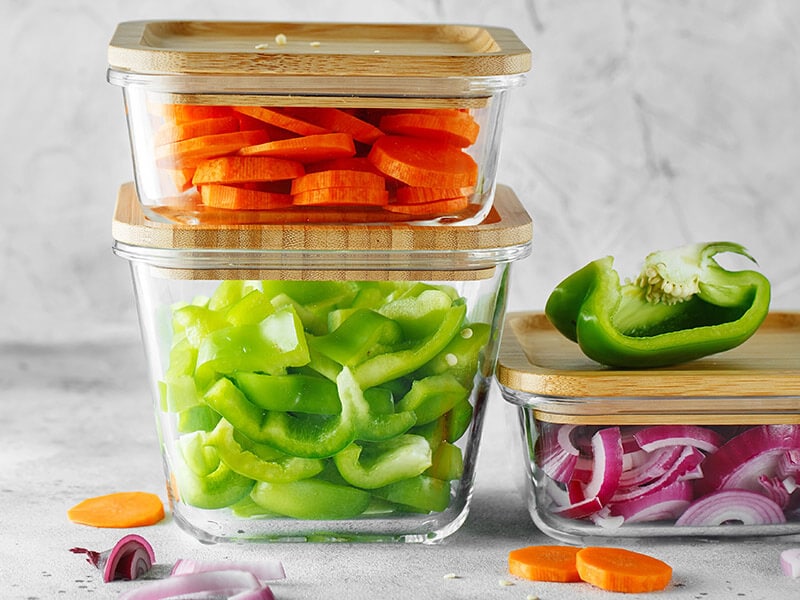
At room temperature, the banana bread stored with this room-temperature method can be used within 3 days.
However, do note that depending on where you live, with the room temperature storage method, hot and wet weather might further shorten the shelf life of your bread compared to temperate and dry climate.
Pros:
- Less dry bread than the fridge method and the freezer method.
- Tastes the best out of the 3 methods.
Cons:
- Shortest shelf life (within 3 days) out of the 3 methods.
- Sensitive to heat and humidity.
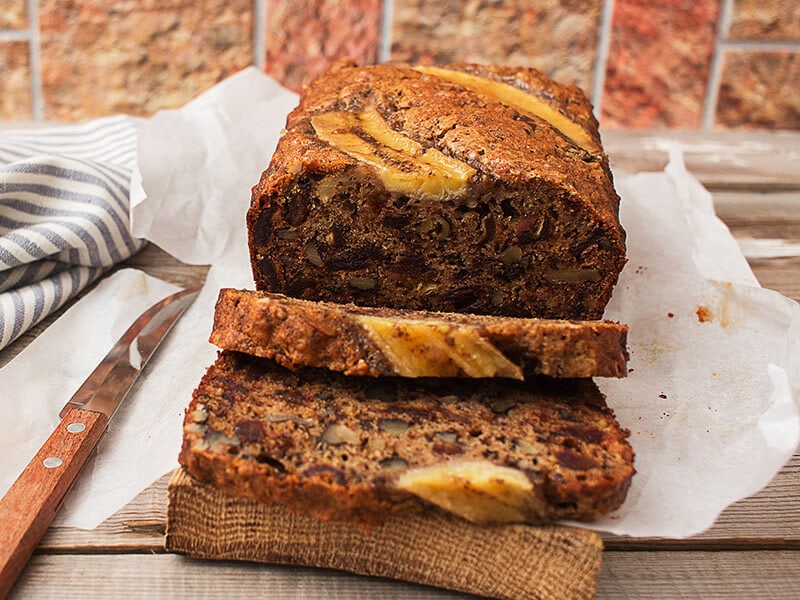
Method 2: The Fridge – For Use Within A Week
If you need to store banana bread for a week, the fridge is the best choice for you. Storing banana bread in the fridge will suck out more moisture out of the bread than the room temperature method does. Less moisture means that the bread is easier to preserve and store for a longer period of time.
For the refrigerator method, I recommend that you store the bread by loaf. Cutting the bread into slides or half-loaf will increase the surface area of the bread, making the slides lose moisture faster than a whole loaf will.
Step 1: Wrap The Bread In Paper Towels
After the banana bread has completely cooled down, you can place the bread on a paper towel. Another paper towel should be placed on top of the bread.
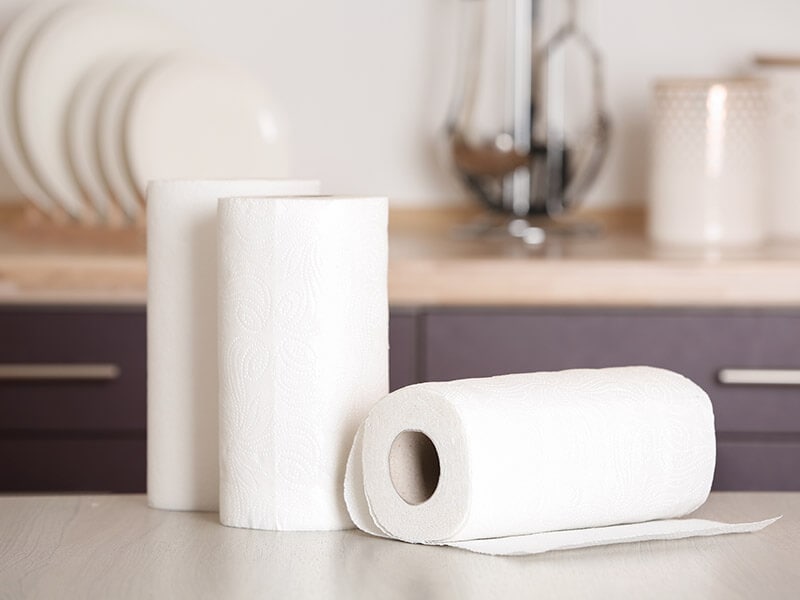
Step 2: Wrap Another Layer Of Wrapping Or Use An Air-Tight Container
Place your paper-wrapped-bread in another layer of the food wrapping or an air-tight container. Take care to wrap the banana bread and towels so that there is no bread surface exposed to the air.
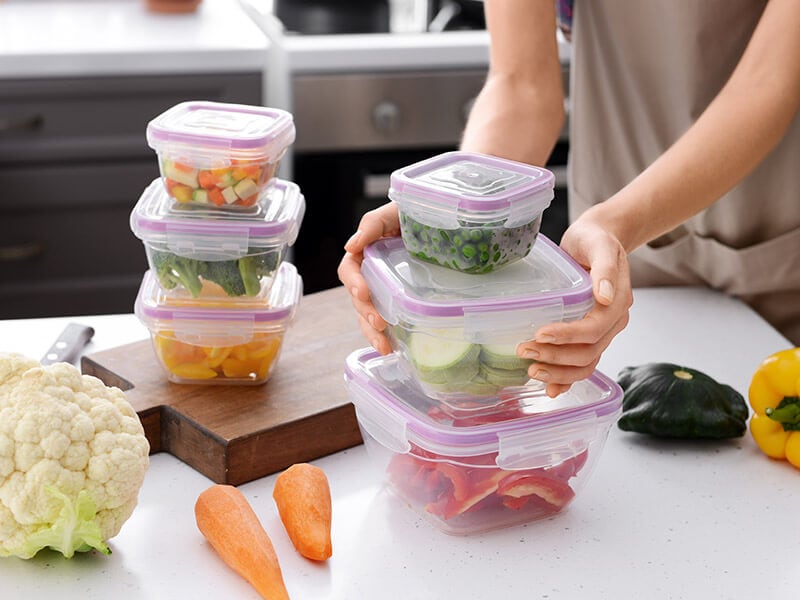
Step 3: Place The Bread Into The Refrigerator
With this refrigeration method, you can keep your banana bread for use within a week.
Pros:
- Longer shelf life than room temperature storage.
- Less dry bread than the freezer method.
Cons:
- Dryer bread than room temperature storage.
- Shorter shelf life than the freezer method.
You can see this video to know more:
Method 3: The Freezer – For Use Within A Month
If you need to store banana bread for a month, the fridge method will no longer suffice, and you’ll have no other option but to chuck your banana bread into a freezer.
Step 1: Cut The Bread Into Slides Or Portions
After the banana bread has completely cooled down, divide the bread into individual portions or slides first. This is an important step! If you forget to do this, you’ll have to thaw the entire loaf out before you can cut out your portion.
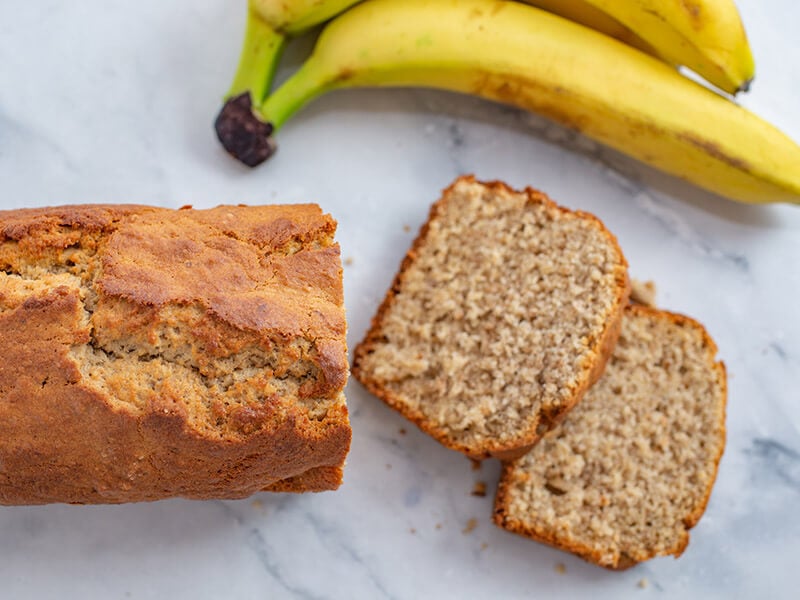
Step 2: Wrap Each Portion Of Bread In Paper Towels
You can place each portion on a paper towel. Another paper towel should be placed on top of each portion. Repeat the step for each portion of your banana bread.
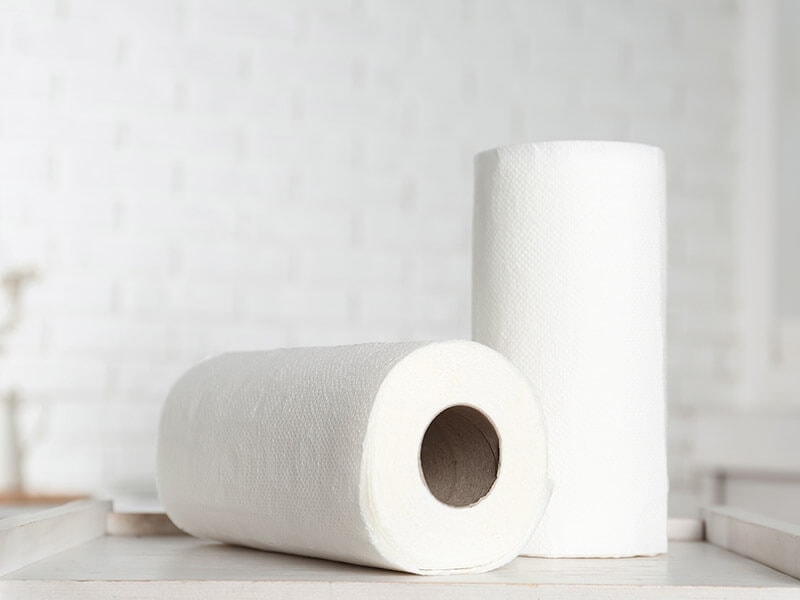
Step 3: Wrap Another Layer Of Food Wrapping Around Each Portion
Wrap each portion of banana bread in food wrapping. Take care not to let the surface of the bread be exposed to air.
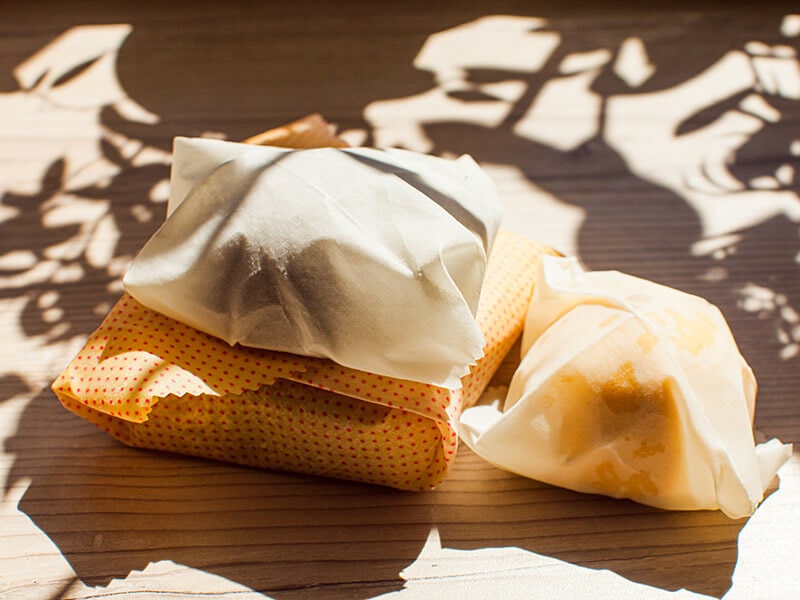
Step 4: Place The Portions In Air-Tight Containers Or Use Aluminum Foil
You can put the entire thing into an air-tight container or wrap it all up again in aluminum foil before throwing it into the freezer. Be careful not to put the banana bread near any raw food in the freezer.
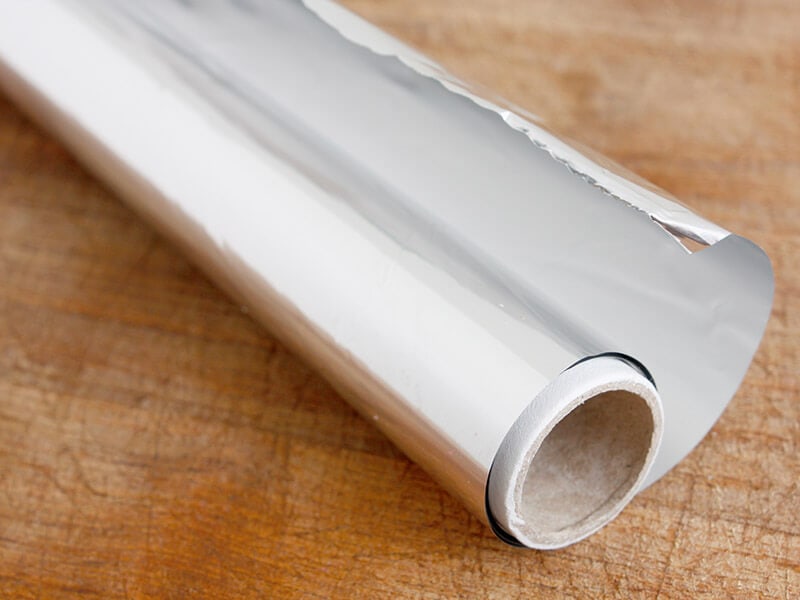
The biggest disadvantage of this method is that when you thaw it out, condensation from the vapor in the air will occur on the surface of the bread, so the bread is likely going to be both soggy and dry.
With frozen banana bread, the only way to salvage the taste would be to essentially steam-baking the bread again. Still better than moldy banana bread, at least.
Pros:
- Longest shelf life out of the 3 methods.
- Still a better dining experience than moldy banana bread.
Cons:
- Likely to result in a bread that’s both soggy and dry at the same time.
- The taste of which can only be salvaged by steam-baking the bread.
Depending on your need, you can pick the best storage method for your situation. Each method will have its own pros and cons, and you will have to strike a balance between your preferred storage time and taste.
But wait, it’s not just the storage method that’s important; how to reheat your banana bread is also essential in completing a Michelin-worthy banana bread dining experience!
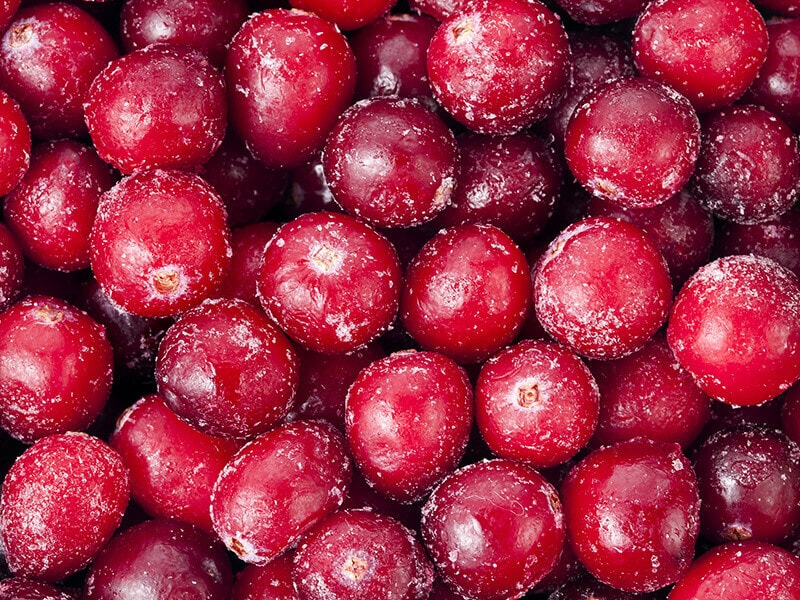
How Long Does Banana Bread Last?
Asking yourself how long does banana bread last? Whether to store by slides or by load? Here is a summary of each method, with details about recommended storage form and shelf life for each method. You can use this table to decide which method fits your needs.
How To Thaw Banana Bread (And How To Salvage The Taste Of One-Month-Old Frozen Banana Bread)
How often have you reheated cold bread but ended up with teeth-breaking rock instead? A loaf of completely dried-out banana bread is never a fun dining experience.
Just as storage is important, suitable reheating and thawing methods will go a long way to improve the taste profile of your banana bread. Depending on how dry the banana bread is after the storage period, you can pick between the following methods to reheat the bread:
Method 1: Light Steaming In A Microwave – For The Slightly Dry Bread
This is the recommended method for Room Temperature Storage and Refrigerator Storage.
After storage time with proper storage methods, your banana bread will be slightly dried out (but not too dried out).
Normally, when you heat up cold bread in a microwave, the remaining water in the bread will be heated and vaporized again, making the bread even drier. Don’t reheat your bread without steaming!
To counter this, a way to reheat your banana bread again while still adding some moisture back is light steaming in the microwave.
Step 1: Take Out The Wrapping
First, take out all of the wrappings of your banana bread. No paper towel or plastic wrapping in a microwave, else you’re not actually steaming it!
Step 2: Let The Bread Cool And Cut Out Your Portions
Let the bread cool down to near room temperature, cut out the portion you’re going to eat, and place the portion on a microwave-safe dish or container. You can rewrap the rest of the bread not used to continue storing the remaining portions.
Step 3: Heat Up The Water
In a small microwave-safe bowl or the steaming tawa, you can pour in some water and heat up the bowl or tawa in the microwave until the water is hot.
Step 4: Steam Bread In The Microwave
You need to microwave both the water bowl and the dish of banana bread for around 30 seconds or until the bread is heated to your preferred temperature.
You can take a look at this video guide to learn how to steam with a microwave. You can steam your banana bread with the same steps.
Extra tip:
If you want to add a slight aroma of herbs or spices to your banana bread (banana bread with a light cinnamon aroma, yum!), you can add some aromatic herbs or spices to the small bowl of water before you heat it up.
The banana bread will be lightly steamed in the microwave as the aromatic compounds of the herbs vaporize. The aromatic compounds will subsequently give a light fragrance of the herbs and spices to your banana bread.
Method 2: Steam-baking – For The Very Dry And Soggy Banana Bread
I’m looking at you, one-month-old frozen banana bread.
In principle, steam-baking is essentially an extended version of light steaming in a microwave. Frozen banana bread takes a longer time to be heated up, so frozen bread will need an extended heating time that a microwave isn’t sufficient for.
In addition, if you let the frozen banana bread thaw naturally at room temperature, condensation will occur on the surface of the bread. This condensation will make the surface of the bread incredibly soggy while the inner parts of the bread stay cold and incredibly dry.
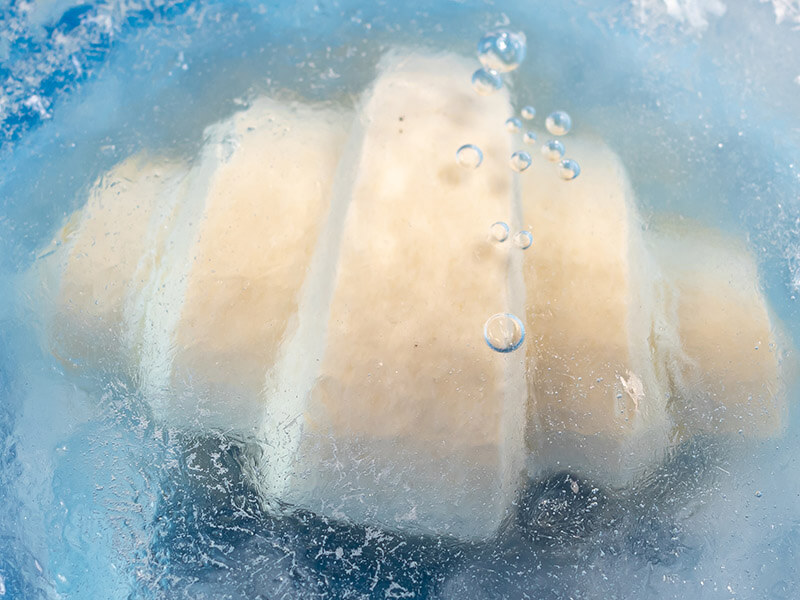
As such, instead of letting frozen banana bread thaw naturally at room temperature or using the microwave method above, you should steam-bake your frozen banana bread in an oven.
Step 1: Take Out The Wrapping
First, take out all of the wrappings of your banana bread and place it in an oven-safe container. You should not let it cool down to room temperature before reheating because letting the bread thaw naturally will make it extra soggy.
Learn why you should not microwave aluminum foil. Remember to never microwave aluminum foil!
Step 2: Check If Your Oven Is Cool
If your oven is hot, wait until your oven has cooled completely before you can begin the steam-baking process.
Step 3: Steam-Bake Your Bread
Follow your oven’s instruction manual to begin the steam-baking process. Some ovens will let you pour water directly to the bottom of the oven. Meanwhile, some ovens will have a separate water container for you to pour water in for the steam-baking process.
You can steam-bake your bread at around 300° for 30 minutes or until the banana bread has reached your desired temperature.
Easy steps to steam-bake with your oven. The steam-baking method in this video also applies to banana bread.
How To Store Banana Bread Muffin
Despite both being bread, banana bread and banana muffin have different structures, thus having different needs in storage practice.
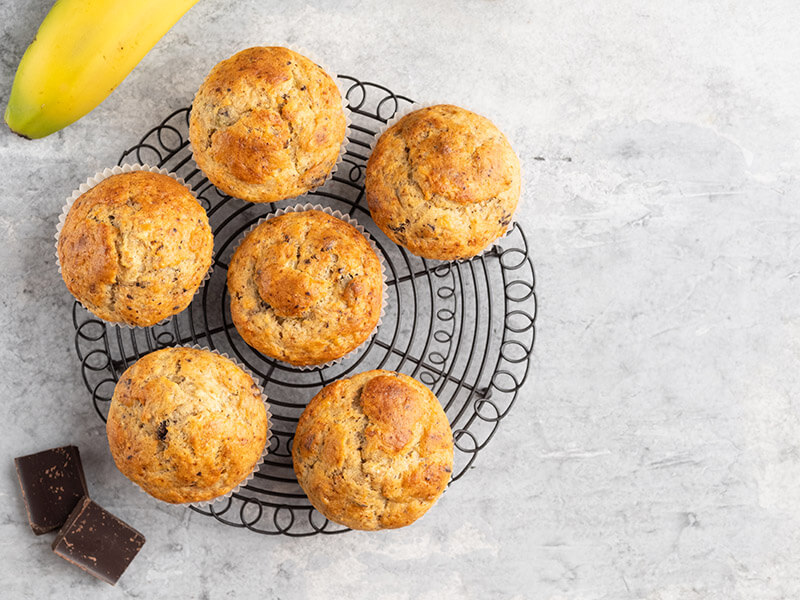
Banana bread muffin is a muffin, which is a type of quick bread. Different from your standard banana bread, banana muffin has higher air content in its structure and will spoil faster than banana bread. As such, banana muffin needs to be stored differently than banana bread.
Because banana muffin needs higher air content and moisture content to keep its fluffy structure, the freezer method is out of the question. You can only store banana muffins at either room temperature or in the fridge.
Method 1: The Room Temperature Method – For Use Within 1 Day
For banana bread muffins stored at room temperature, the shelf life is only about 1 day.
Step 1: Let The Muffins Cool
Like with banana bread, you must let your banana muffins cool completely before you can begin the storage process. Not letting your banana muffins cool down completely will trap too much vapor inside your banana muffin, making it too wet and likely to spoil during the storage process.

Step 2: Wrap Your Banana Muffin In Paper Towels
Just like with banana bread, you need to wrap each banana muffin in paper towels. The paper towels will absorb any excess moisture from your banana muffins.
Step 3: Place Banana Muffins In A Locking Container
In the room temperature method, plastic food wrapping will be too airtight for the banana muffins to “breathe”. An air-tight wrapping or container will lead to condensation on the surface of the banana muffin, making it a perfect environment for molds and bacteria to grow.
As a result, in the room temperature method for banana muffins, just a locking container will be a better choice than an air-tight wrapping or container.
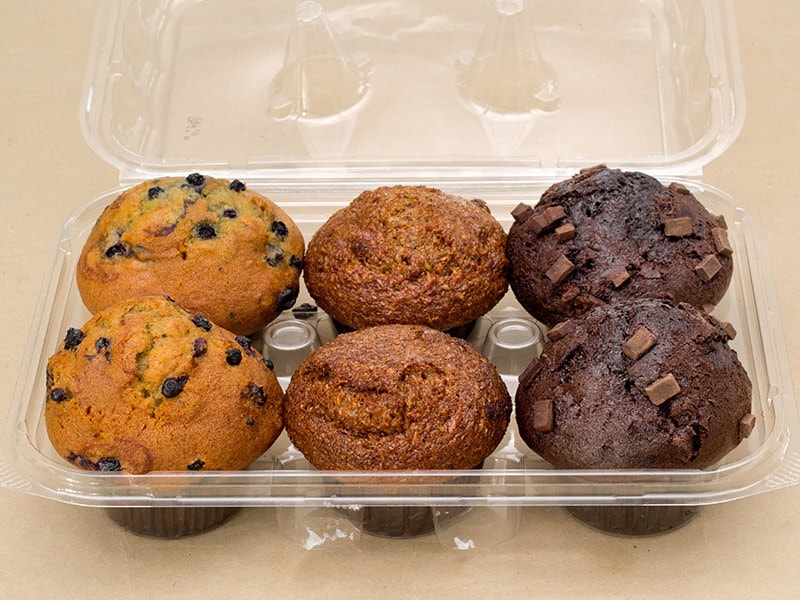
Pros:
- Delicious and moist.
Cons:
- Very short shelf-life, only around 1 day.
Method 2: The Fridge – For Use Within 5 Days
For banana muffins stored in the fridge, the shelf life is only about 5 days.
Step 1: Let The Muffins Cool
Like with banana bread, you must let your banana muffins cool completely before you can begin the storage process.
Step 2: Wrap Your Banana Muffins In Paper Towels
Just like with banana bread, you need to wrap each banana muffin in paper towels. The paper towels will absorb any excess moisture from your banana muffins.
Step 3: Wrap Another Layer Of Wrapping Or Use An Air-Tight Container
Place each of your muffins in another layer of the food wrapping or an air-tight container. Take care to wrap the banana muffins so that there is no muffin surface exposed to the air.
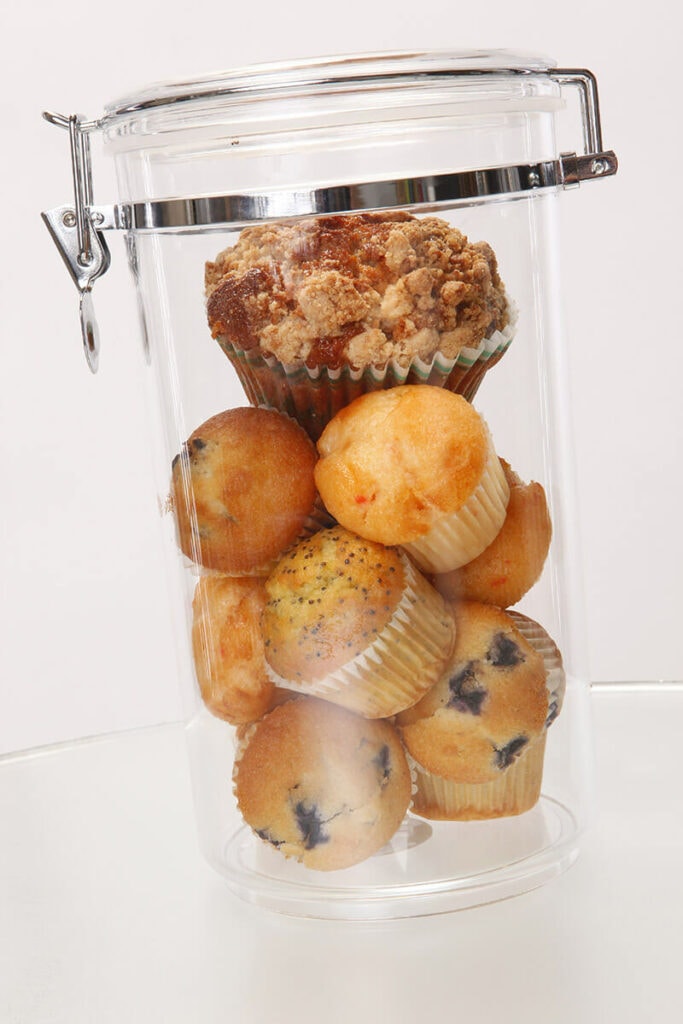
Step 4: Place Banana Muffins In The Refrigerator
Remember to avoid placing your banana muffins next to raw food or vegetables.
The risk of cross-contamination and why you should not put cooked food next to uncooked food.
Pros:
- Lasts longer than room temperature method.
Cons:
- Dryer-tasting muffins than those in the temperature method.
How Long Does Banana Bread Muffin Last?
Here is a summary of the pros and cons of each storage method for banana muffins. For all applicable methods, it’s recommended that you wrap and store your banana muffins individually.
Remember: Don’t freeze your banana muffins.
How To Reheat Banana Bread Muffins (Or Not)
Depending on how dry the banana muffins are after the storage period, you can pick between the following methods to reheat the muffins:
Method 1: No Reheating
Different from banana bread, banana muffins can be eaten at room or fridge temperature just fine. If you store your banana muffins at room temperature or if you like a slightly cool banana muffin, go ahead and eat your muffins straight away!
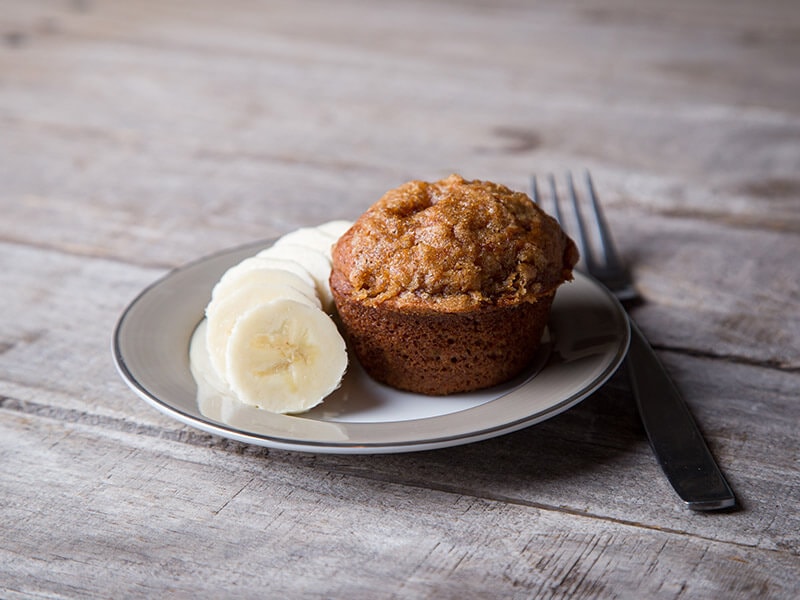
Method 2: Light Steaming In A Microwave – For The Slightly Dry Muffin
This is the recommended method for muffins stored in the refrigerator.
Step 1: Take Out The Wrapping.
First, take out all of the wrappings of your banana muffins (no paper towel or plastic wrapping in a microwave!).
Step 2: Let The Muffins Cool.
Let the muffins cool down to near room temperature before you steam them in the microwave. You should place the banana muffins in microwave-safe containers to prepare for the next steps.
Step 3: Heat Up The Water.
In a small microwave-safe bowl or the steaming tawa, you can pour in some water and heat up the bowl or tawa in the microwave until the water is hot.
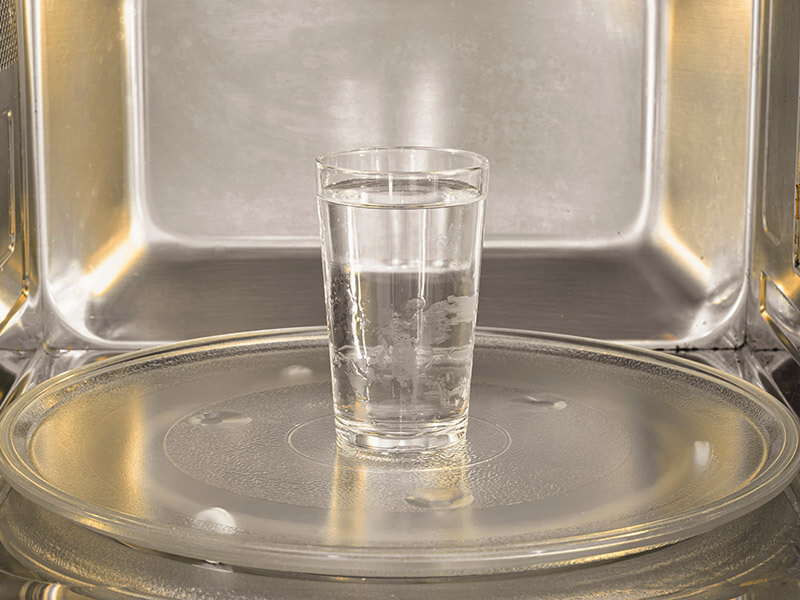
Step 4: Steam Muffins In The Microwave.
You need to microwave both the water bowl and the dish of banana muffins for around 30 seconds or until the muffins are heated to your preferred temperature.
A video guide on how to steam with a microwave. You can apply these steps to banana bread as well.
How To Tell If Banana Bread Or Muffin Has Gone Bad
Despite how well you have stored your banana bread, sometimes, accidents happen, and your banana bread has gone spoiled. This could be because of improper storage methods, a malfunctioning fridge, a blackout, or just a stroke of bad luck.
Spoiled bread and muffins can be dangerous to consume, and here are the signs that your bread and muffins have gone bad:
1. No Strange Color Spots
If you see any strange color spot on your bread, it means that your bread has gotten moldy or become a bacteria culture. Banana bread should look like banana bread after storage time (3).
Any color spots, be they white, black, green, or yellow, that look different from the rest of the bread, is a sign of a fungi or bacteria culture growing on your bread.
In no circumstance should you cut out the strange spots and eat the “clean”-looking parts. The strange spots you can see with your eyes are the cultures, the parts with the densest concentration of bacteria or fungi (3).
This means that the rest of the bread is also covered in bacteria or fungi. It’s just that the density of the bacteria or fungi is lower in those “clean” parts than in the culture spots, so you can’t see them growing all over your bread.
Furthermore, some bacteria and fungi generate toxins to poison their environment, aka your bread. And those toxins are generally colorless.
In general, just because you can’t see your bread spoiling doesn’t mean it doesn’t happen, but if you do see your bread spoiling, throw it away immediately and clean your storage place with disinfectant. Also, never cut out the “clean” parts to eat!
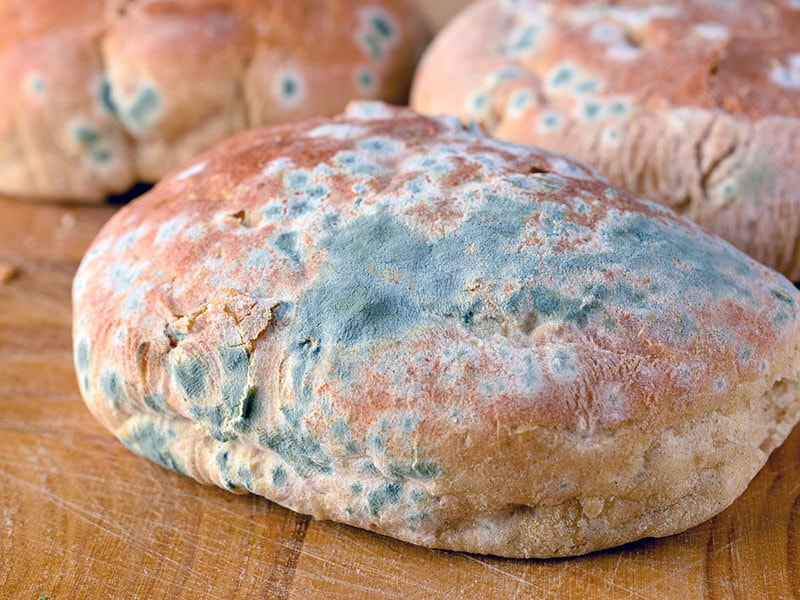
2. No Strange Feel
Banana bread should feel like banana bread, not slimes. Your banana bread can dry out after storage time, but if it feels slimy and gooey, it means that your bread is no longer your bread but is a bacteria culture (3).
Some bacteria and fungi don’t generate colored culture but do generate slimy waste in the environment. If your bread feels slimy or doesn’t feel like how banana bread should feel, please throw it away.
3. No Strange Smell
Even after storage time, your bread should still smell like bread and banana. The smell should intensify and be easy to distinguish after heating. If your banana bread suddenly smells like a bad mix of yogurt and vomit, please throw it out immediately and clean out the place where you stored the bread with disinfectant.
4. No Strange Taste
As with all stored food, you should take a small bite first to check for any strange taste. Some bacteria, fungi, and toxins are colorless and odorless but might taste strange.
If you taste an odd mix of yogurt, vomit, and bitter pill in your banana bread, then you should
out the piece, go rinse your mouth, and throw the entire bread away immediately.In the freezer and fridge methods, if you store your portions of banana bread together and 1 portion has gone bad, there’s a good chance that all portions have gone bad, and you need to check on the rest of your fridge or freezer content immediately.
In short, your banana bread should look like banana bread, feel like banana bread, smell like banana bread, and taste like banana bread. If it looks, feels, smells, or tastes like anything else, you should throw it away immediately (3).
Why you should not eat the “clean” part of moldy bread.
FAQs
Have more questions on how to store banana bread? Here are the questions frequently asked by banana bread lovers around the world.
Finally, Enjoy Your Banana Bread!
Baking banana bread is hard, but storing and reheating banana bread only takes a few simple steps. If you follow the methods outlined in this article correctly, you’ll get to enjoy beautiful slides of moist and delicious banana bread. Maybe even add some of your favorite toppings like honey and cheese for an even more complete dining experience with your favorite dish! Do you have any tip that you’d like to tell us? Don’t be shy and comment below!
References:
- Sundaram, S., Anjum, S., Dwivedi, P. and Rai, G., 2011. Antioxidant Activity and Protective effect of Banana Peel against Oxidative Hemolysis of Human Erythrocyte at Different Stages of Ripening. Applied Biochemistry and Biotechnology, 164(7), pp.1192-1206.
- Nigella.com. 2021. Banana Bread Storing and Ingredients | Ask Nigella.com | Nigella Lawson. [online] Available at: <https://www.nigella.com/ask/banana-bread-storing-and-ingredients>
- Healthline. 2021. How Long Does Bread Last?. [online] Available at: <https://www.healthline.com/nutrition/how-long-does-bread-last>

